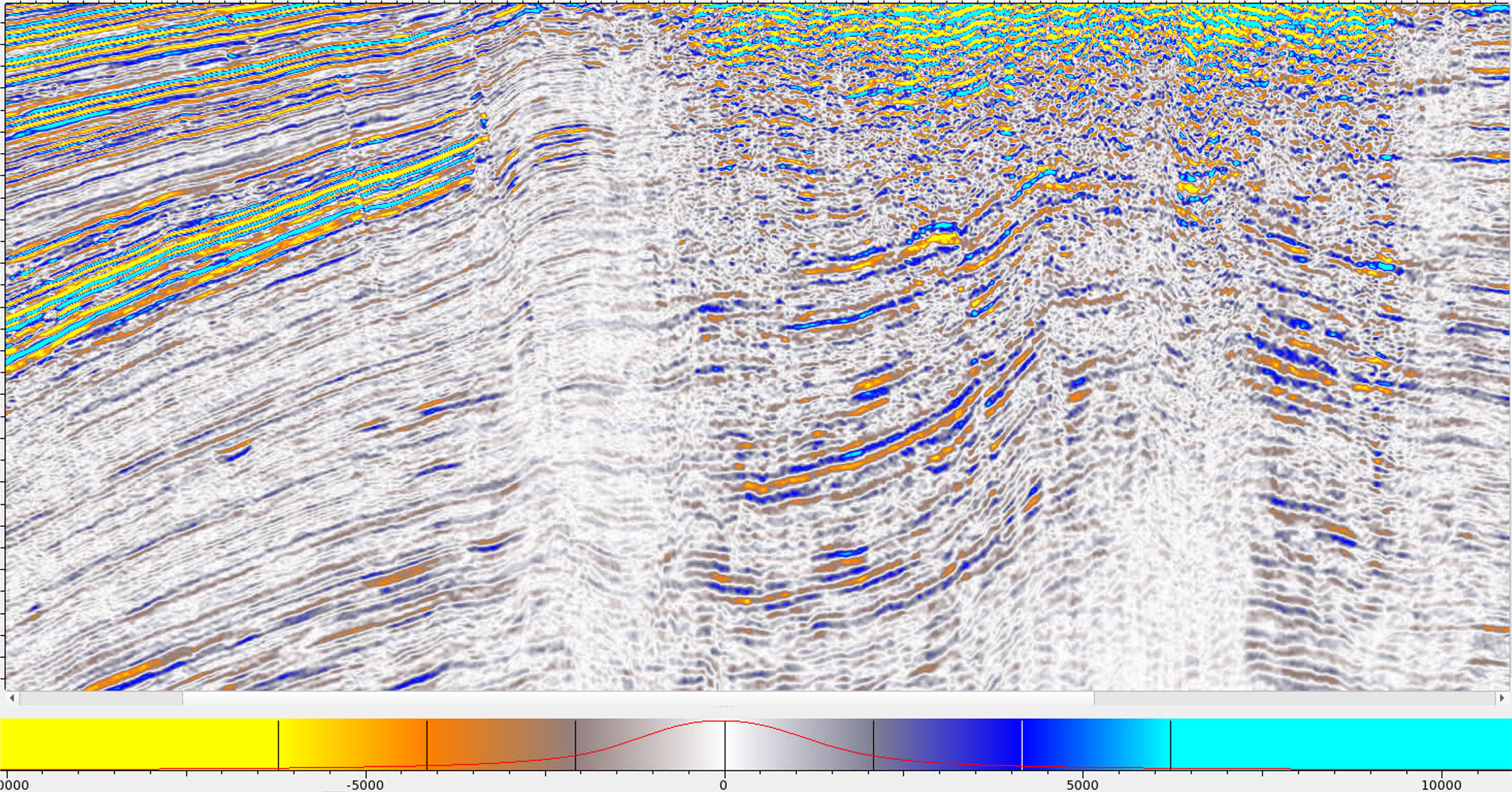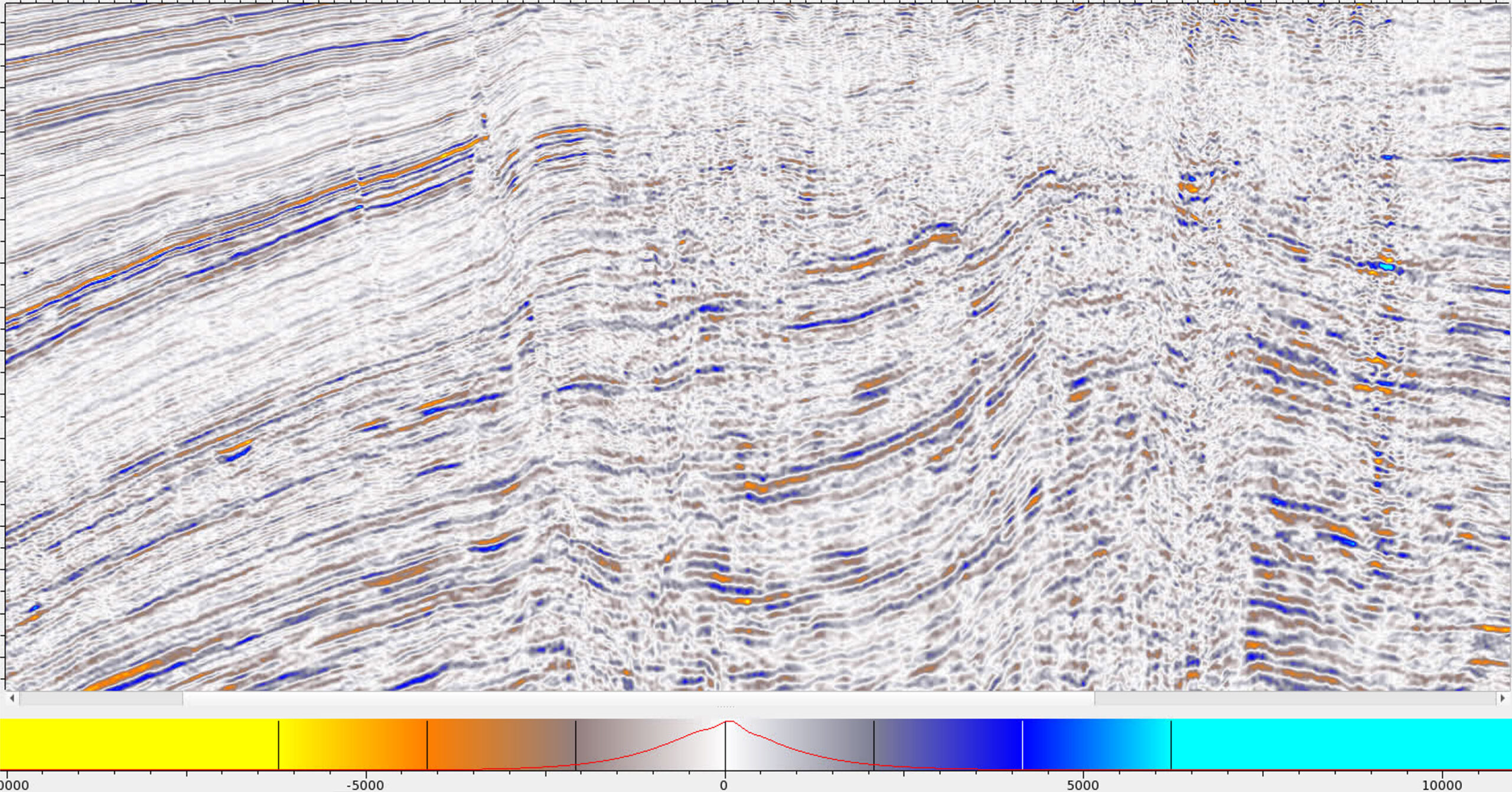Case story
Accounting for lateral and temporal amplitude and frequency variations in LFC-based inversion
Client: Independent Oil & Gas Operator
Location: Malaysia
Amplitude scalar derivation and application
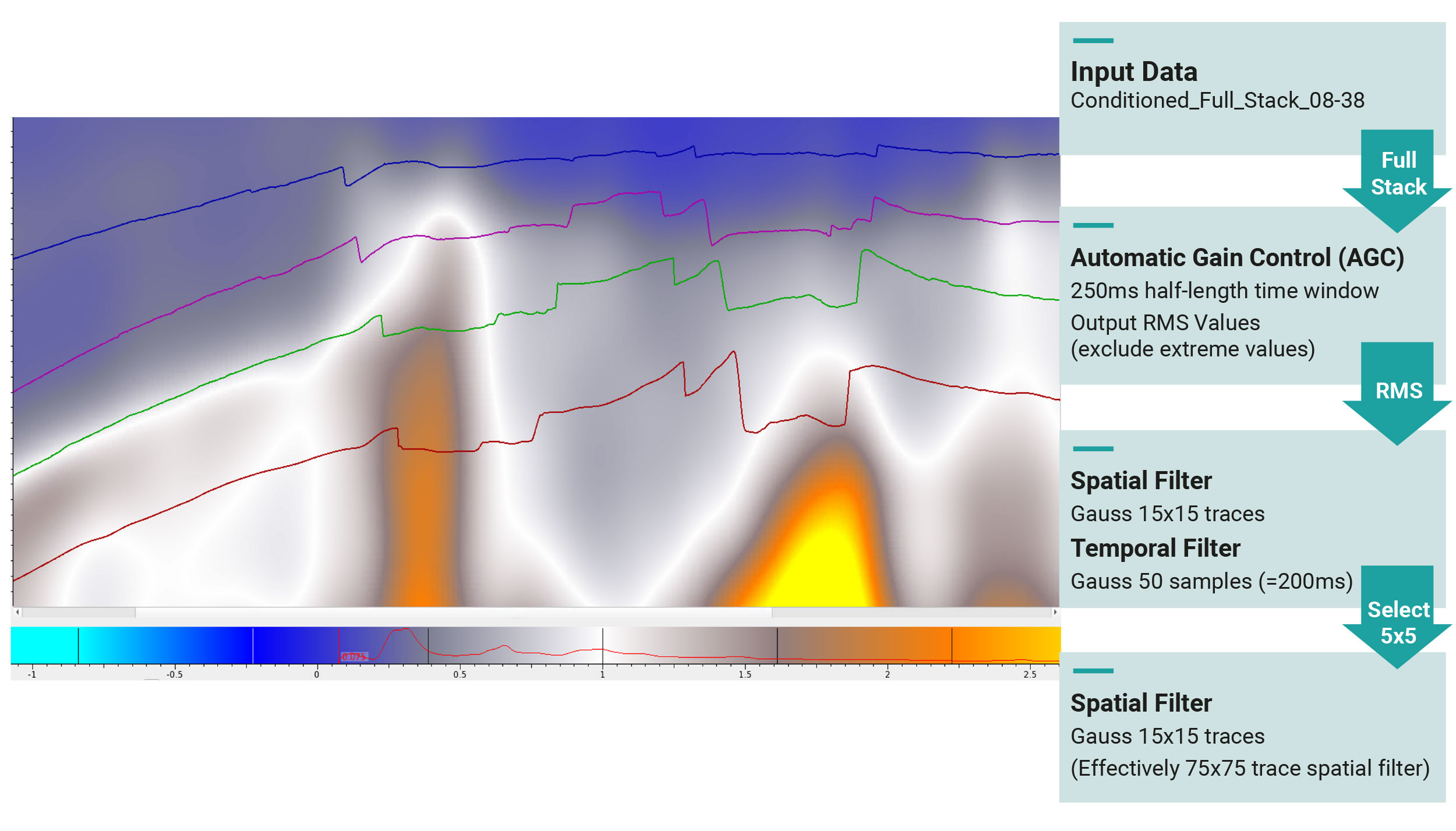
20-26° angle stack section – use slide to see before (left) and after (right) scaling.
Comparison between legacy EEI results and scaled PCube+ inversion results
Lithology section from EEI (relative Vp/Vs ratio – legacy data)
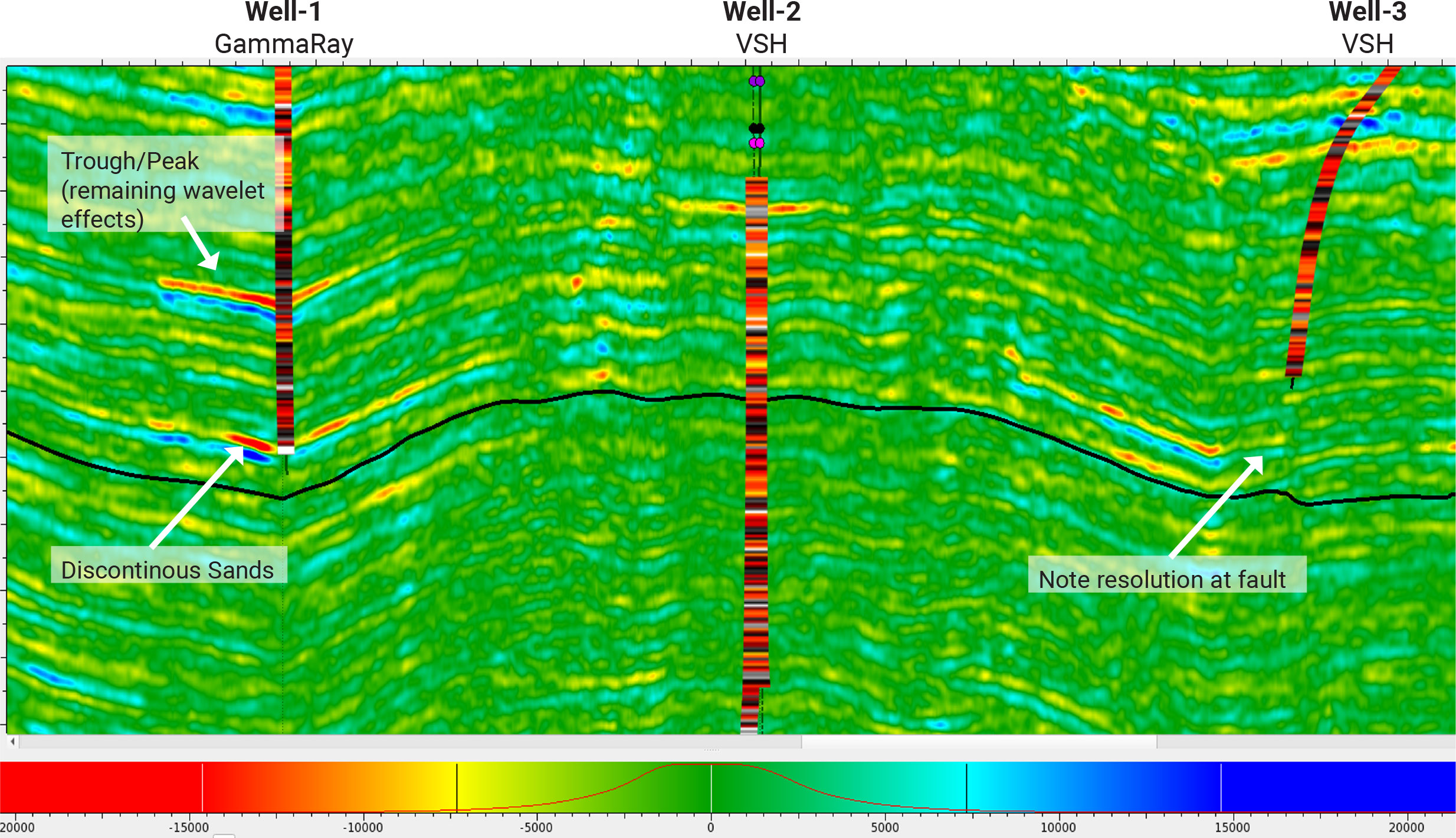
Lithology section (shale probability) from PCube+ inversion after conditioning and scaling
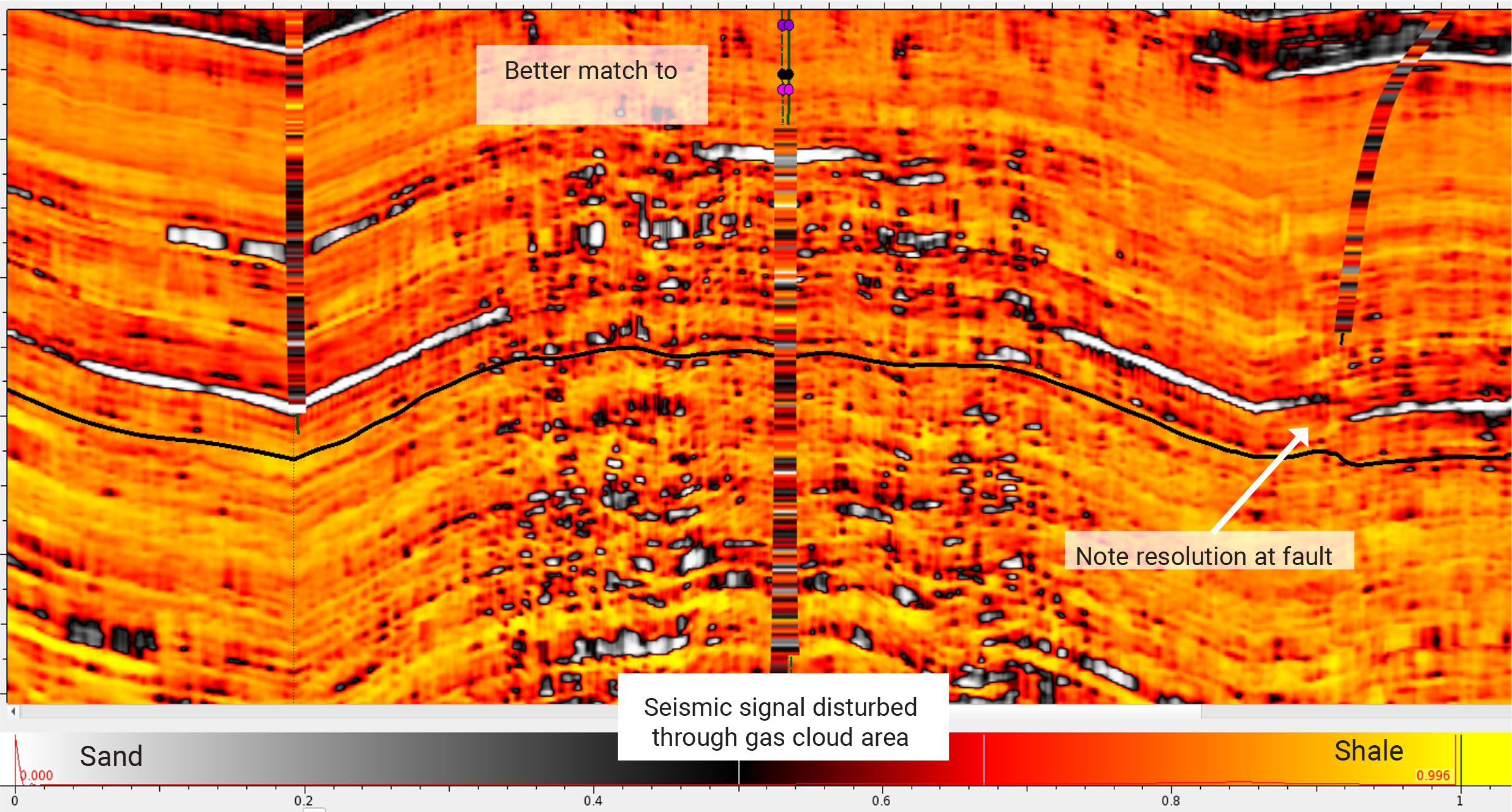
Inverted lithology volumes show improved continuity and more discrete definition of sand bodies than the legacy EEI volumes. Imaging effects of shallow overburden gas are still evident to some extent in inversion results, however additional sand bodies are identified in the target interval.
Mapped lithology response at target from EEI (relative Vp/Vs ratio – legacy data)
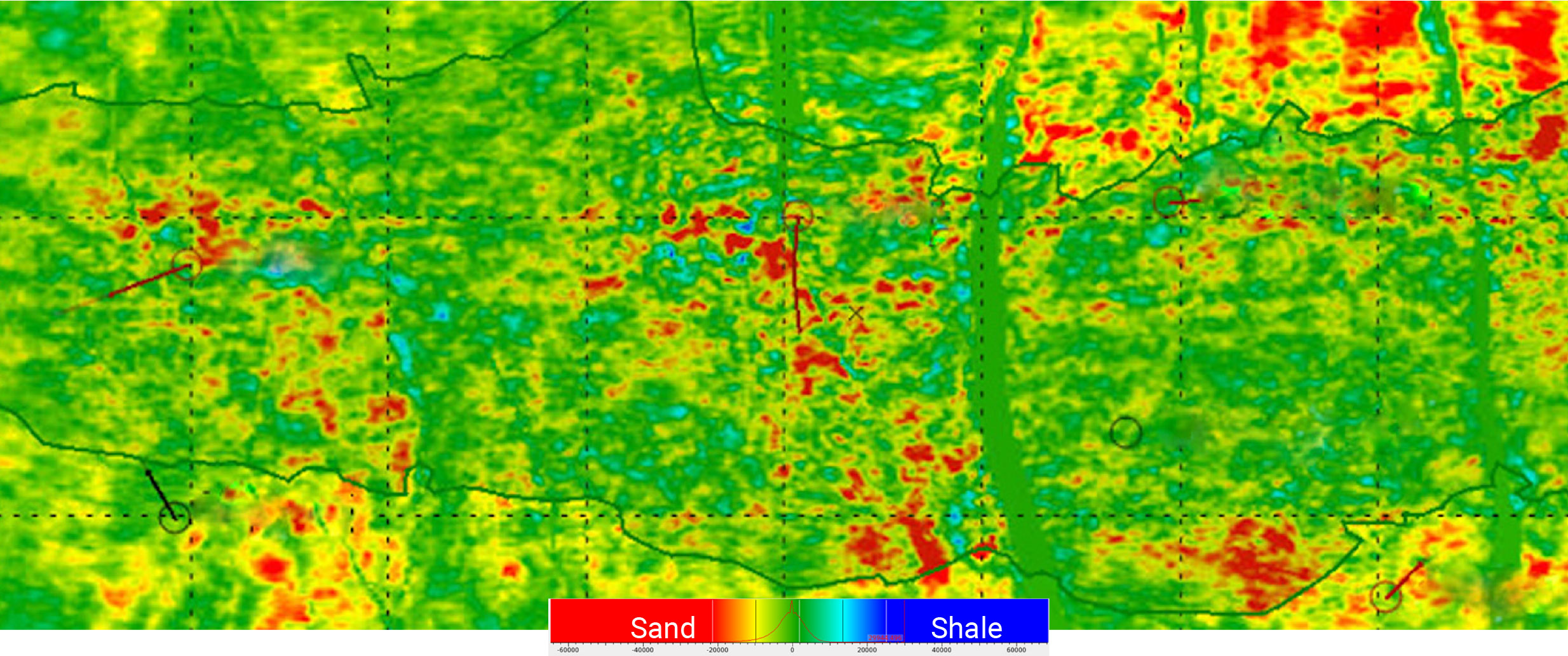
Mapped hydrocarbon sand probability at target from PCube+ inversion after conditioning and scaling
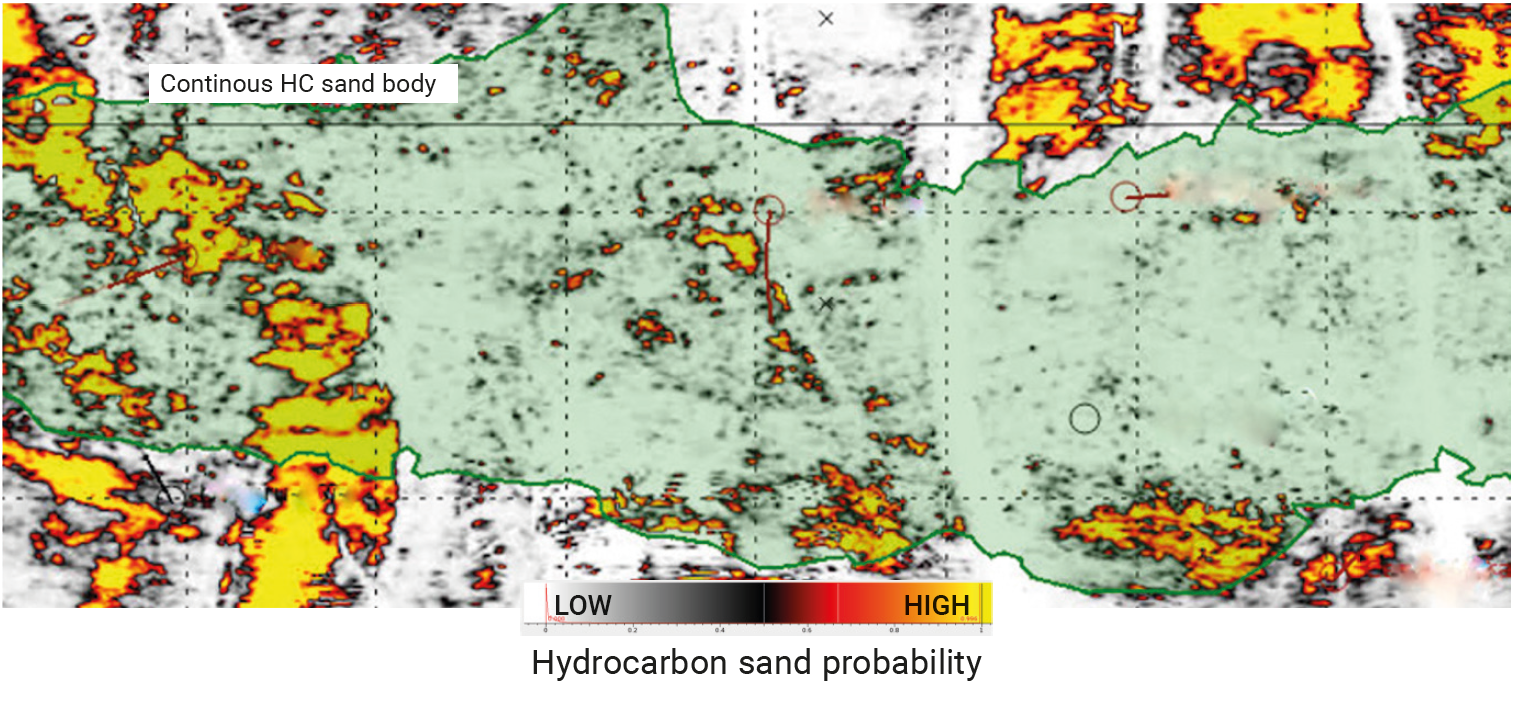
Sand body continuity is relatively poorly defined beneath the gas cloud (green polygon) in the legacy EEI data. After conditioning, scaling and inversion, a hydrocarbon bearing sand channel is now identified with high probability running beneath the gas cloud to the west of the structural closure


